Do you remember when you first met Spider-Man? Maybe it was in an animated series. Or maybe you saw Tobey Maguire in that iconic red-and-blue suit. Or maybe while you were flipping through the pages of a Todd McFarlane–drawn comic. However you first came across your friendly neighborhood Spider-Man, the Marvel superhero has been such a persistent part of our pop culture since his arrival in 1962 that he’s practically Americana.
Dan Slott, the long-running writer of Amazing Spider-Man, Marvel’s flagship title for the character, remembers when he first met Spidey — face-to-face.
"One day when I was biking home from school in suburban California, I went by this 7-Eleven," Slott said. "They had a big poster in the glass saying, ‘Spider-Man is coming to your town to sign comics!’"
At the time, Slott wasn’t much of a comics collector. But as a fan of the 1967 animated series and its ubiquitous theme song ("Spider-Man, Spider-Man / does whatever a spider can"), he couldn’t pass up the opportunity. Slott begged his dad for an allowance so he could buy comics for Spider-Man to sign. By the time he came across the man in the Spider-Man suit, the experience had changed him.
"Those were my first comics, the ones Spider-Man signed," Slott said. "That messed me up for life."
Spider-Man has long been one of the most popular characters in fiction, let alone comic books, and unlike some of his confederates, he’s a hit across demographics. Whether comic book lifers or children dressing up as him for Halloween, there’s something indelible about Spider-Man.
"In a general, people-on-the-street kind of way, I would argue that Spider-Man is probably the most popular superhero on the planet," said Forbes’s Scott Mendelson.
It’s a lasting popularity, too. While other superheroes come and go, Spider-Man endures. In a genre mostly known for change, Spider-Man always seems to be present and popular.
At least, he did.
For all of the character’s success and the passion he engenders, Spider-Man’s 55th year finds him in unfamiliar territory. With Spider-Man: Homecoming kicking off Spidey’s third film franchise in 15 years and with the comics at a five-year sales low point, the character is facing a foe he’s never met before: an uncertain future. Does your friendly neighborhood Spider-Man have what it takes to regain his place in the hierarchy of superheroes during this era of reboots and cinematic universes?

What made Spider-Man so popular in the first place? With so many interpretations of the character across comics, film, TV, video games, and beyond, everyone has a different perspective on what makes him such a lasting figure. It begins with the man under the mask.
"Peter Parker is the first thing I think of," Sean Howe, the author of Marvel Comics: The Untold Story, said. "More than most superheroes, his alter ego is the appeal because his alter ego is always present. Even when he’s in costume.
"Even in costume he’s neurotic."
While there have been other Spider-Men (and women), Parker became the archetype upon which much of the Marvel Universe was built. Wisecracking but sincere, imperiled but powerful, extraordinary but relatable. While Spider-Man wasn’t the first superhero at the publisher — the Fantastic Four were the first to arrive at the newly titled "Marvel Comics" (originally Timely Publications) — in the words of Marvel editor-in-chief Axel Alonso, "He [was] the guy that broke the mold of the superhero."
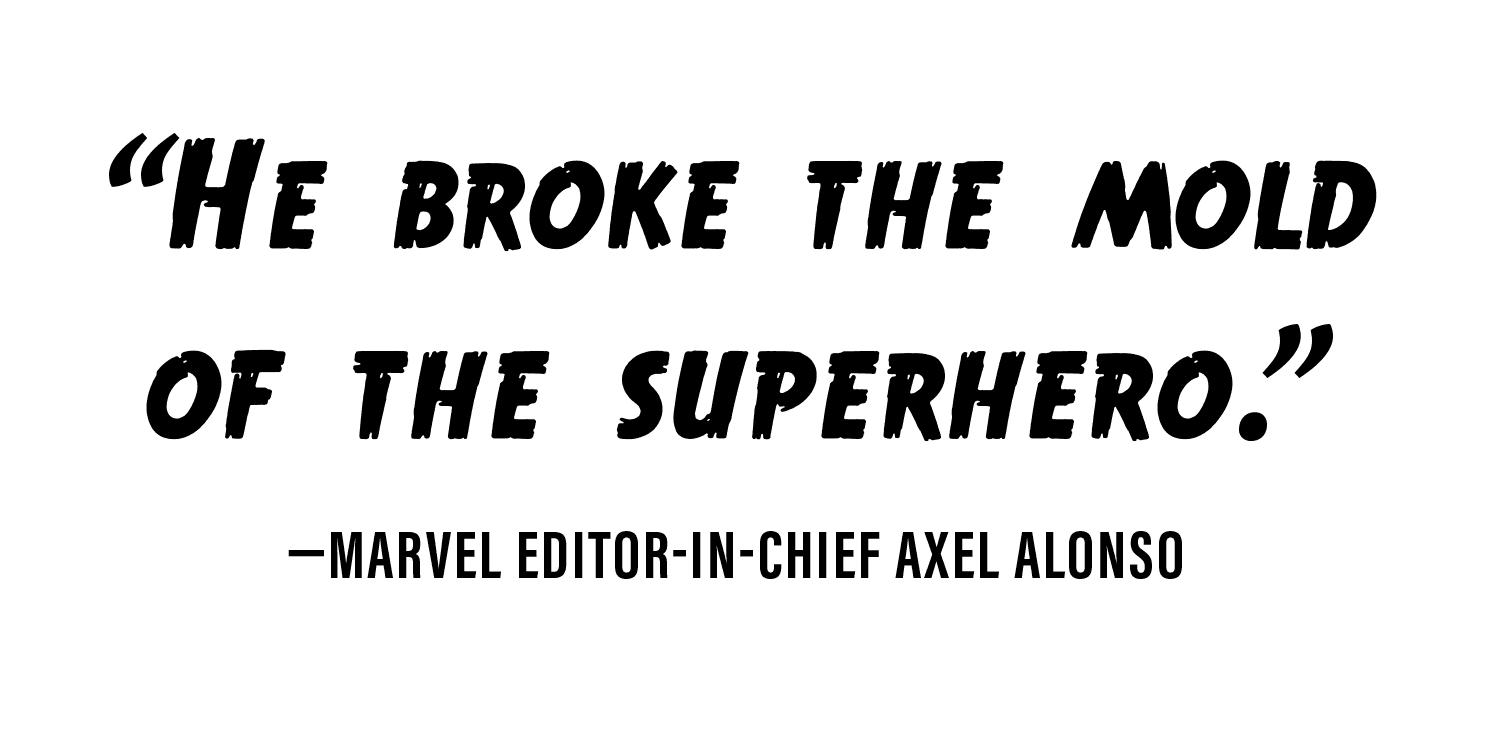
While the masked men and women of DC Comics were iconic gods who represented the best of humanity, Spider-Man helped establish an essential differentiator for Marvel’s line. He was a hero who was defined by his weaknesses as much as by his strengths, and his humble beginnings and often-ordinary problems formed the foundation of what distinguished Marvel’s slate of heroes from their rivals at DC: They were relatable.
Spider-Man’s life isn’t just battling supervillains; he has had significant others, money problems, a terrible boss. As Slott said: "He’s the hero you know."
"If anything was going to zap you and turn you into a superhero, you were going to be Spider-Man," Slott said. "You’re going to screw up in all the ways you normally would screw up, but now you’re going to do it with superpowers and it’s going to give you super problems."

While they likely didn’t know it at the time, Stan Lee and Steve Ditko fundamentally changed the nature of the genre forever when they created the character, making a superhero whose personal life wasn’t just used as a transitional point to action scenes, but as a core element of his identity. It led to story beats that superhero comics hadn’t dealt with before, and legions of fans connected with the character because of it.
Beyond that, the character was young, and that tied readers to Spider-Man further. While not everyone is an alien given powers by our yellow sun or a genius billionaire playboy philanthropist, we’ve all been young and prolific at ruining our own lives. That’s an essential reason for the character playing well in any era: His origin is always contemporary. While most of his peers are tied to specific conflicts or times in American history, Peter Parker was a teenager who happened to be in the wrong place at the wrong time. And who hasn’t been there before?
Unlike his fellow heroes, Spider-Man’s costume covers him completely. The look of the costume is an important part of his appeal — ask any comic artist for a short list of the greatest superhero costumes ever, and Spider-Man’s classic design will be on it. But it’s what it doesn’t show that matters.
"When you see that character the first time dressed head-to-toe in red and blue, without a trace of skin, he could be anybody," Alonso said. "He could be you."
While characters like Thor or Captain America have costumes that reveal at least part of their identity, Spider-Man is anonymous. He could come from any ethnicity or background, an essential element to the character becoming such a sensation.
Of course, the reason people adore the character isn’t just because they can see themselves in him. It’s also because he represents the best version of us. We would aspire to be him if we had superpowers. No story better encapsulates that idea than Amazing Spider-Man No. 33. At the end of issue No. 32, the character had been trapped under literally tons of machinery — famously captured in the cover to issue No. 33 — by his nemesis Doctor Octopus, and he must escape to save his Aunt May.


(Marvel Comics)
Spider-Man, pushed to his very limit, contemplates failure. But instead of giving up, he lifts the impossible weight off his back and drops a line that captures the aspirational qualities of the character: "Anyone can win a fight when the odds are easy! It’s when the going’s tough — when there seems to be no chance — that’s when it counts!"
Spidey never gives up, living life by a mantra passed on to him by his deceased Uncle Ben. "With great power comes great responsibility," the saying goes, and it’s almost as famous as the character himself. Brian Michael Bendis, the current writer of Spider-Man, says the line is so pervasive and powerful, "You could actually build a pretty substantial religion around [it]."
He’s not just some sort of aspirational Boy Scout, though. Peter Parker is also a huge nerd — a socially awkward genius, really — who becomes a cool, web-slinging, trash-talking superhero. His quipping while fighting villains is a trademark — "Peter should be constantly busting balls," Bendis said — that helped differentiate him from other Marvel heroes, and also made him even more of a sensation with readers who wished they could stand up to bullies with as much swagger as their hero.
And that’s who Spider-Man is. He’s your guy. He’s you, if you had been bitten by a radioactive spider. But when you’re a character with such defined core characteristics — especially ones built on relatability and familiarity — a lot can go wrong with the smallest of adjustments. And lately, Spider-Man’s lost his mojo.

In 2014, a new volume of Amazing Spider-Man launched, averaging orders of nearly 130,000 copies over its 18 issues, per Comichron estimates. So far in 2017, the series is averaging just under 73,000 copies ordered, with May’s issue No. 27 barely eclipsing 51,000. It’s the fewest orders the title has seen since 2012, and only the sixth year in its existence that Amazing has averaged below six figures.
It’s a stunning development. As Brian Hibbs, the owner of San Francisco’s Comix Experience comic shop, said, "It’s not a rational world we live in that Spider-Man is not selling over 100,000 copies every single issue."
There are many reasons for this. USA Today’s Brian Truitt, for one, pins this downturn on a hot-button issue Marvel faces these days.
"Their biggest problem is they reboot the book every six months," Truitt said.
Rebooting, in this case, could also be called renumbering. It’s a tactic comic publishers — particularly Marvel — have employed increasingly often in recent years. And the simple explanation is starting a long-running series anew with a No. 1 issue. A new volume means a new jumping-on point for readers, making it easier to pick up for a larger audience, meaning more hypothetical interest, meaning higher orders from comic shops. It’s a good idea, in theory.
But when it happens multiple times in a decade, many posit that reboots are equally effective as jumping-off points. And for a series that had only two volumes in its first 50 years and has had two new ones in just the past three, Amazing Spider-Man readers are getting plenty of opportunities to jump off.
Another issue potentially impacting the title is brand dilution. Once upon a time, if you wanted to read Spider-Man, there was pretty much just Peter Parker. These days, it’s quite different. Marvel’s lousy with Spider people, as Parker is prominently joined by:
- Miles Morales: a black, Latino teenage Spider-Man
- Spider-Gwen: a version of Parker’s deceased love interest Gwen Stacy who is a Spider-Woman from another universe
- Spider-Woman: a Spider-Woman from Parker’s universe
- Silk: a hero bitten by the same radioactive spider as Parker
- Scarlet Spider: a Peter Parker clone
- Spider-Man 2099: the Spider-Man of the future
- Renew Your Vows Peter Parker: an alternate universe version of the character
All of these characters currently have their own comics or have had one within the past year. The idea behind this is to give readers more of a thing they already like. They like Spider-Man plenty. But what if there were seven or more Spider people? That’s even better, right? That may not be entirely true. According to Hibbs, so many iterations of the character existing at one time is having a net negative effect on the popularity of the core book. He believes Marvel isn’t creating a larger audience with this tactic; instead, it’s fragmenting the one it already has.
This is being realized at both of his stores. Amazing Spider-Man was once his satellite store’s top-selling title — these days, it’s barely in its top 20. And in his main store, he barely moves double digits of Amazing per issue, a far cry from its peak. Readers are splintering and picking up the title that fits them best, with only Amazing registering as a top seller.
The current status of the character was mentioned as a potential factor, as well. "Most people like the Peter Parker they have," according to Howe, and things can get heated when the character’s battle-tested formula is thrown off.
Slott experienced that firsthand, having killed Peter Parker in 2012’s Amazing Spider-Man No. 700 and placed nemesis Doctor Octopus’s consciousness in his body, making the new version of the character the Superior Spider-Man for a little over a year and a half. Fan response was so vitriolic initially that Slott received death threats.
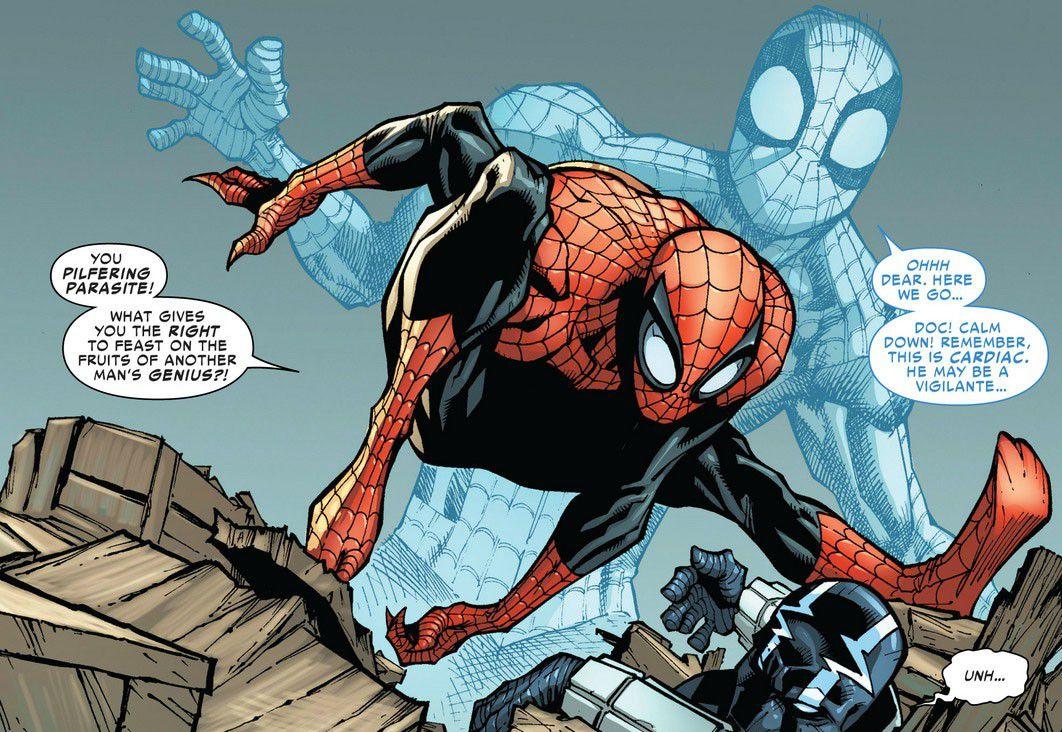
These days, Parker is back in full swing, but he’s in a position that’s even more untenable than death for some readers: CEO of his own company, Parker Industries.
The issue with that for fans is twofold. One, Peter Parker is always seen as youthful and growing up, and there’s nothing more grown up than running your own company. Two, his perpetual stumbles define him, and being the CEO of a prominent company runs contrary to how people view Spider-Man. According to Hibbs, readers "don’t like Peter Parker not being a loser."
While the Peter Parker, CEO, story line hasn’t fit well with the vision some have for the character, it’s by no means the greatest issue facing Amazing Spider-Man and its dwindling readership numbers. Strangely, that problem has nothing to do with the book itself, but has to do with Marvel’s line as a whole.
"I pin [Amazing Spider-Man’s sales dip] on the general Marvel malaise that has been going on for the last three years," Hibbs said.
Amazing itself has been relatively stable compared with the rest of the line, maintaining its place as Marvel’s top-selling non-event comic, non–Star Wars title. Largely, the book has followed standard attrition. But Marvel’s line itself has dropped precipitously, with the average Marvel title in April 2017’s Top 300 comics selling nearly 11,000 fewer copies compared with the same period three years earlier, per estimates.
Much digital ink has been spilled digging into the why behind the performance of Marvel’s line. Depending on who you ask, it could be that the comics are too expensive, there are too many titles at one time, the comics’ quality has flagged, there are too many events, the reboots have eroded interest in the comic format, or any number of other theoretical reasons. Whatever the cause, it has managed to impact even stalwart titles like Amazing, with shops I spoke to mostly describing the comic as a solid, if not spectacular performer when it once was one of the top titles in the whole industry.

The good news: There’s hope for tomorrow.
The line-wide sales downturn has triggered action by the publisher, as this fall, it’s rolling out a new initiative: Marvel Legacy. This endeavor is built on resolving many readers’ greatest troubles with the publisher’s current position. The hope is to bring the comic line back in sync with what readers love about Marvel — the quote "the world outside your window" has been a key point, showing a renewed emphasis on relatability as a core tenet — while also moving away from the reboot trend.
Instead of focusing on new no. 1 issues, Marvel will return the line to its original legacy numbering — with Amazing coming in at No. 789 — the departure from which served as a microcosm for many readers’ issues with the publisher. After all, how could you trust the future of a publisher that seemingly rejected its own past?
With a reemphasis on what worked before while moving away from the line-wide reboots, Marvel hopes it’ll resolve two of the largest issues the Spider-Man line — and the rest of its comics — faces in one fell swoop. Whether or not it will is uncertain, especially after the early reveals about Legacy didn’t exactly build excitement in the fan base. But Legacy at least appears that it could be a step in the right direction.


(Marvel Comics)
While it remains to be seen if Slott will continue on as Amazing Spider-Man’s scribe in the Legacy era, the writer hinted that another primary issue facing Spider-Man’s prospects is nearing its conclusion. The current arc could very well mark the end of the road for CEO Peter Parker, with the character heading toward a necessary reset to more familiar territory. And if anyone knows how important it is to return the character to his core, it’s Slott.
The writer has been on Amazing Spider-Man for a decade now, and with periods of releasing two or even three issues a month during his run, his time on the book has been "a marathon of sprints." But it hasn’t just been a long run; it has been a successful one, as well. While many have admonished him for the shocking directions he’s taken Spider-Man, his stories that initially enraged readers now double as Slott’s most beloved works with the character. As Nick Lowe, the Marvel executive editor and vice president of content, digital publishing, who heads the Spider-Man line, said, "The amount of people who shouted Superior Spider-Man down at first and then were mad it was ending was amazing."
It’s because few writers have understood the core of the character better than Slott. He knows that Spider-Man is only as great as the challenges that face him. And the character has faced some of his greatest trials yet under the writer’s guidance, including the CEO story line, which was designed to take the character — and readers — to an uncomfortable place.
"Every once in a while, we hear from a fan who is like, ‘Spider-Man shouldn’t be doing this!’" Slott said. "That’s the point. He’s the guy from down the block. He’s the guy you know. That guy shouldn’t be president of anything."
It’s been an original and effective tale that, with some distance, will likely be regarded fondly, just like the controversial Superior Spider-Man story line. Of course, not everyone is sold on the current state of the book. A.V. Club contributor Oliver Sava — once a fan of Slott’s work on the title — labeled it "stale" after such an extensive run. Sava is not alone.
The good news for those wanting something different is Peter Parker has a new voice in parallel to Slott. Writer Chip Zdarsky recently launched Peter Parker: The Spectacular Spider-Man with artist Adam Kubert as an antidote of sorts to Slott’s continuity-heavy stories.
"There’s the possibility of a new generation of Spider fans, and we want to make sure there’s a place where they can start where they don’t feel they’ve missed out on everything," Lowe said about the new title. "It doesn’t take place in the cinematic universe or anything, but it is a little bit easier of an entry than this CEO of Parker Industries story line."
Zdarsky’s childhood is dotted with memories of Spider-Man’s influence, and for a creator known for his jokey disposition, the sincerity and passion he has for the character is palpable. His take feels similar to Marvel’s intent with Legacy, leaning into a more back-to-basics approach for Spidey.
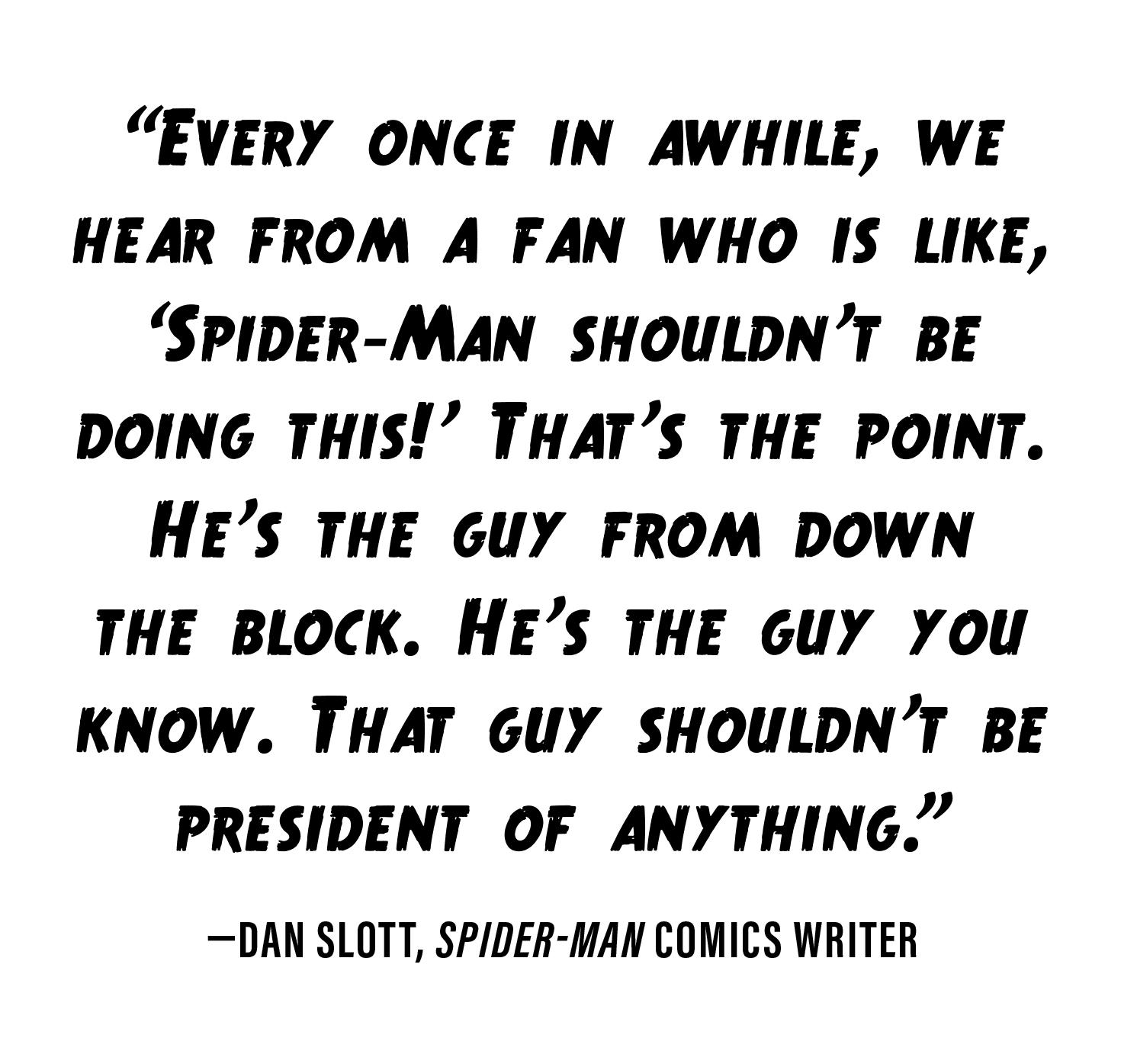
"My job, as I see it, is to create an entertaining book that builds, spirals out of control, and creates emotional stakes," Zdarsky said. "I’m hoping just by lending my voice to the character and this book, that something new and fresh will come out of it."
Its first issue was a throwback delight, highlighting everything we love about the character in a package that feels like a pitch-perfect counterbalance to Amazing. It’s a welcome addition to the Spider-Man line, which has been a fertile space for risk-taking and the expansion of the character’s mythos, providing a stable core to a publisher standing on uneven ground.
Surprisingly, though, the best Spider-Man comic might not be published by Marvel at all, as a new cartoonist brought excitement and passion to the character’s fan base in a way few have in recent memory. Her name is Hannah Blumenreich, and she’s captured the hearts of Spider-Man fans with an unlicensed fan comic from 2016, titled Spidey Zine.
Blumenreich originally started the comic as a joke she shared with a friend, but it quickly became a modern version of the character’s story that matched her perspective. With a limited background reading Spider-Man’s comics, her work instead became a fascinating distillation of the zeitgeist’s view on the character: Her Peter is a normal teenager with problems and interests that match his age, rather than an adult weighed down by decades of continuity.
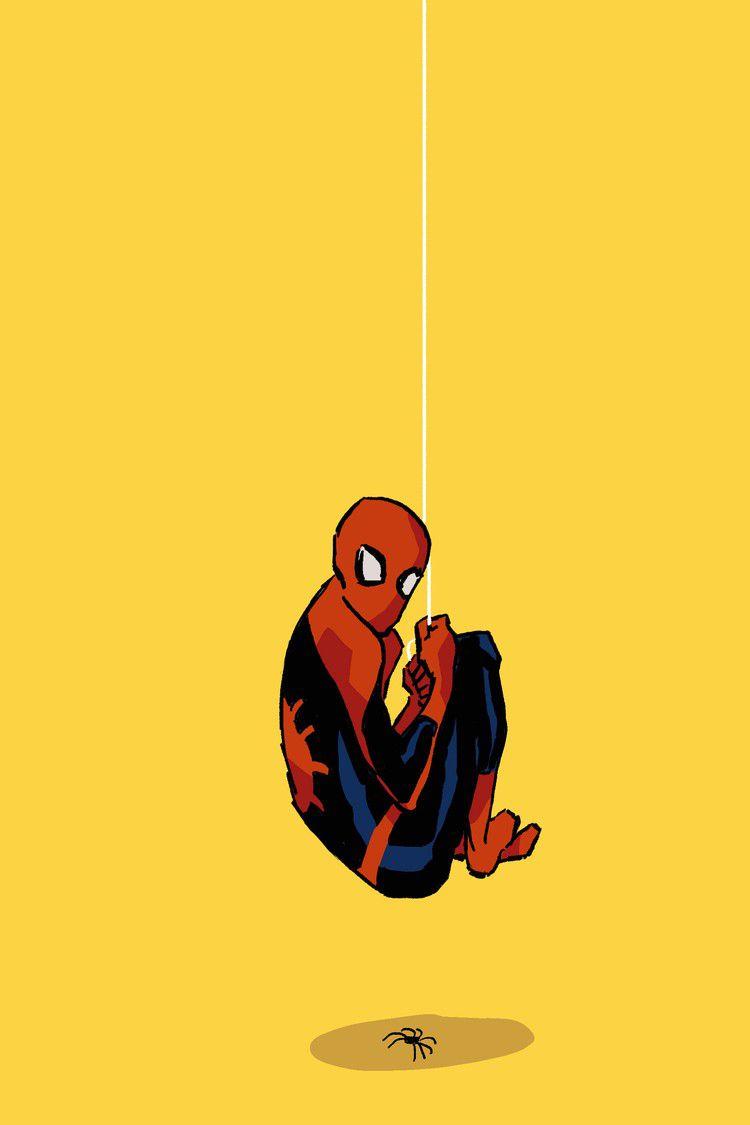
Blumenreich’s comic is reflective of her views as a creator, as she focuses on inventing "empathetic characters without always empathizing with their choices." She found a perfect match for her perspective in Peter, who she describes as "a tender idiot."
"He can be overenthusiastic, but it comes from someplace very genuine, and he’s intelligent when it matters, but it might take him a while to get there," Blumenreich said. "When it comes to putting that into a story, it’s less about building a story around his personality and more about letting his personality determine the course of a story.
"You come up with a scenario, plop Peter into it, and if you’ve got a good enough handle on his character, the rest will sort itself out."
Her Spider-Man comics were initially rolled out via Twitter, and they quickly generated a passionate response thanks to her endearingly small stories and uniquely real-feeling delivery. The supervillain battles were absent, replaced with Gilmore Girls binge sessions in costume with his Aunt May and escorting a young woman who was being harassed by hooligans home, all the while explaining the magic of Cowboy Bebop to her. It was unlike anything we’d ever seen with the character.
"Hannah has such a great handle on how young people talk and interact both amongst each other and with adults that really makes that book so refreshing," Sava said. "That is something that is going to connect with all of the super fans you have in the audience.
"You don’t need to throw in this crazy event or whatever. Just find something that will connect with an audience in a real way, and those people will want more."
It wasn’t just denizens of the internet responding to her work. While unlicensed fan work might produce a cease-and-desist letter in other mediums, in comics, it earned Blumenreich work. She’s lined up several jobs with Marvel so far, starting with contributing art to October 2016’s The Unbeatable Squirrel Girl No. 13. Marvel editor Wil Moss hired her for the gig, and he saw what many fans did: a special creator with a wholly unique perspective on one of Marvel’s oldest characters.
"She not only had managed to find a fresh approach to the character and his world — not an easy thing to do 55 years in — she also was still able to keep the stories so true to who the character is," Moss said.
Blumenreich’s Spider-Man comics spread through Marvel quickly, with big-name creators and editors alike passing them on to Lowe. He loved how real her Spider-Man felt, and with a big anniversary issue coming in March, he wanted to give young readers something extra to enjoy. It was a perfect fit for Blumenreich, who, within a year of Spidey Zine becoming a sensation, was hired to create a short story for Amazing Spider-Man No. 25. Fittingly, it stayed true to her take on the character.
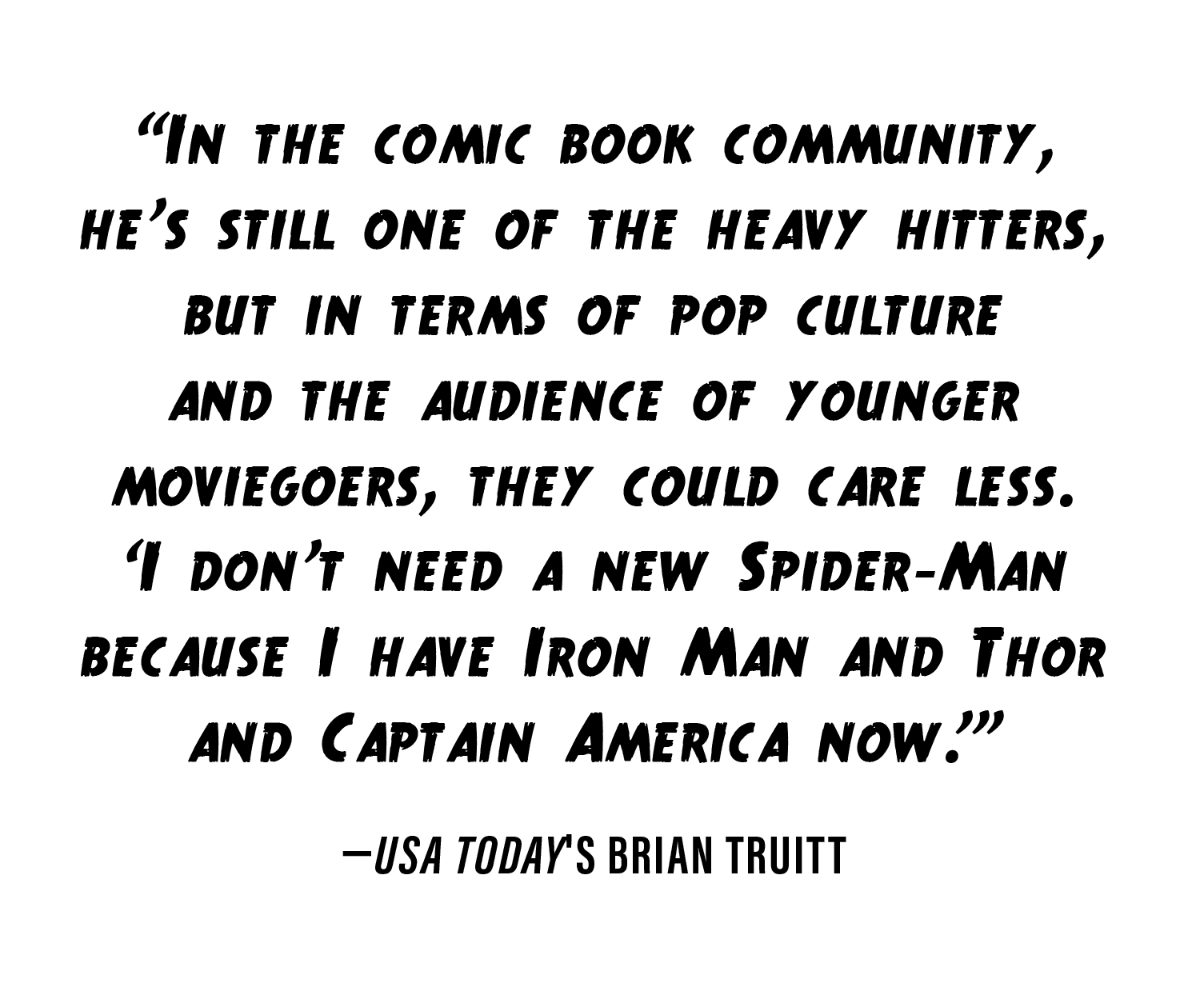
"When she turned in her outline for her Spider-Man story, at the very beginning, I was like, ‘Do you want a webbed-up supervillain in that very first scene? I’m not trying to get you to have a Spider-Man-Sandman fight, but do you want to show evidence of his patrol?’" Lowe said. "She convinced me, ‘No, what I want to do is an empty patrol. A patrol that went nowhere.’"
Fans were gaga over the comic, as the most talked-about story on the day of this monumental issue’s release wasn’t the new identity for a classic Spidey villain or the arrival of renowned artist Stuart Immonen, but an eight-page yarn about Peter adopting a stray dog named Sandwich. It was perfect, and led to more Marvel work for Blumenreich, as she’s providing a backup story in August’s Spider-Gwen No. 23.
The long-term health of the Spider-Man line goes beyond a new generation of creators. As it expands well beyond Peter Parker, with an assortment of Spider people appearing in their own titles, some are concerned with the deleterious impact the new versions might have on the core title. Alonso assured me this wasn’t a worry.
"The Marvel Universe is big enough for all of them, without a doubt," he said.
These variations are a key part of the line going forward, with the biggest being the character who started the trend: Miles Morales. Created in 2011 by Bendis and artist Sara Pichelli as a replacement for a then-deceased version of Peter Parker from a parallel universe, this teenaged hero quickly proved himself more than just a stand-in, but a featured player in his own right, generating a passionate fan base and cultivating his own identity outside of the core mythos of Spider-Man.
"I think Miles is important because, if we look at him as Bendis’s reconfiguration of the Peter Parker origin story, it doesn’t place guilt at the center," io9’s Evan Narcisse told me. "Miles’s origin is about finding the bravery to step up and use his special abilities for the greater good, rather than being haunted by the guilt of a loved one’s death."
As Narcisse noted, Miles is a different personality type than Peter, allowing for a refreshing change on an aging formula. It helped endear the character to a new generation of fans. Lowe called Morales "monumental," and in many ways, the character unlocked Marvel’s future successes with other legacy characters like Kamala Khan/Ms. Marvel and Spider-Gwen.
The character has quickly become a big part of Marvel’s plans. In fact, after 2015’s event comic Secret Wars — which destroyed the character’s home, the Ultimate universe — Morales was one of the few characters that shifted to the main Marvel Universe. It was a risky move for Morales, as it meant for the first time he’d have to share a world with the "real" Parker. It was also one that came with a caveat that Bendis insisted on.
"Before we brought him [to the main Marvel Universe], I said, ‘If we’re going to be in a world where Peter Parker is Spider-Man, then we just have to be very bold and clear with our statement to our audience that Miles is Spider-Man, too,’" he said.
"That there’s just two Spider-Men."
Not only that, but Bendis — who is the only writer to ever work on Miles’s main book — insisted that the title itself be called Spider-Man, ensuring that there’s no confusion about the character’s role in the main universe. Morales wasn’t going to be a sidekick; he is Spider-Man in his own right.
It’s a good idea, and one that shows the care and consideration Marvel puts into the character. However, some disagree with the premise. Hibbs believes it confuses matters, with some readers unsure as to which book stars Morales. Sava, on the other hand, believes it limits the character’s potential because of Parker.
"Naming Miles’s book Spider-Man doesn’t make him the Spider-Man," Sava said. "If two are forced to occupy the same space, one of them has to be the lesser one.
"That’s just how things work. And it’s usually the one whose sales aren’t as good."
Narcisse thought more highly of it, calling the move "significant," with it acting as "evidence that you can iterate on a heroic template without diluting it."
"He’s his own character — operating in the legacy of Peter — with his own wants, needs and aspirations," he added.

Regardless of the character’s secret identity or position in the comic universe, it’s clear that Morales is an important part of long-term plans, both inside comics and out. In fact, Sony is bringing a Phil Lord– and Chris Miller–produced, Shameik Moore–starring animated feature film of the character to life in 2018, meaning that comics won’t be the only medium where multiple Spider-Men exist at one time.
It’s an exciting team working on the project — beyond Lord, Miller, and Moore’s inclusion, Bob Persichetti (The Little Prince) and Peter Ramsey (Rise of the Guardians) are codirecting — that has the chops to effectively introduce the character to a whole new audience. But some are skeptical about the move. Forbes’s Scott Mendelson hoped for Morales to become the face of the live-action movies, as it would give the new franchise something to differentiate it from the two that preceded it. Narcisse views it as a missed opportunity, calling the animated film an attempt to mollify the character’s significant fan base.
"Honestly, the animated film feels like appeasement," Narcisse said. "The various parts of Marvel know that fans want more inclusivity as far as onscreen superhero representation but they prioritized a Peter Parker reboot in the live-action movies.
"Offering up an animated movie with Miles Morales feels like cold comfort."
While the Spider-Man movie universe is rapidly expanding — there’s also the upcoming Venom film starring Tom Hardy, and Silver & Black, a Gina Prince-Bythewood–helmed movie featuring supporting characters Silver Sable and Black Cat — the franchise’s fate rests in familiar hands: Peter Parker’s.
The third Spider-Man franchise in 15 years is launching July 7, as Spider-Man: Homecoming welcomes Tom Holland to the titular role under the direction of Cop Car’s Jon Watts. It comes at a crossroads for the franchise, as Spider-Man is still a giant in film, but a wounded one.
When the franchise first launched in 2002 with the Tobey Maguire–starring, Sam Raimi–helmed Spider-Man, it was a smash, opening with nearly $115 million at the box office. It ended up winning the year domestically with over $403.7 million, finishing behind only the second Lord of the Rings and Harry Potter films worldwide. Not only that, it was well received by fans and critics alike, earning an 89 percent on Rotten Tomatoes and a 7.3 on IMDb.
"It was a good, light, but grounded character-driven comedy-drama that happened to be a relatively well-written romance film that also happened to be a comic book adventure movie starring everyone’s favorite web slinger," Mendelson said. "It was a monster."
The series peaked creatively with the exceptional second chapter, which found the best balance between the dueling identities of Peter Parker and Spider-Man while having its greatest villain performance in Alfred Molina’s nuanced take on Doctor Octopus. But after that, the franchise began to take on water.
While the third chapter set box office records overall and for the franchise — it was the first movie ever to open to $150 million domestically, as well as the highest-grossing Spider-Man film to date, worldwide — it was a movie at war with itself. It was a poorly kept secret that Raimi didn’t want to include Venom in the film as a villain, with the studio ultimately winning out. The character felt shoehorned in, and with three villains (if you include James Franco’s Harry Osborn), it left little room for what viewers loved about the first two movies despite its considerable two-hour-and-19-minute running time. The result was a mishmash of ideas that didn’t quite work on screen.


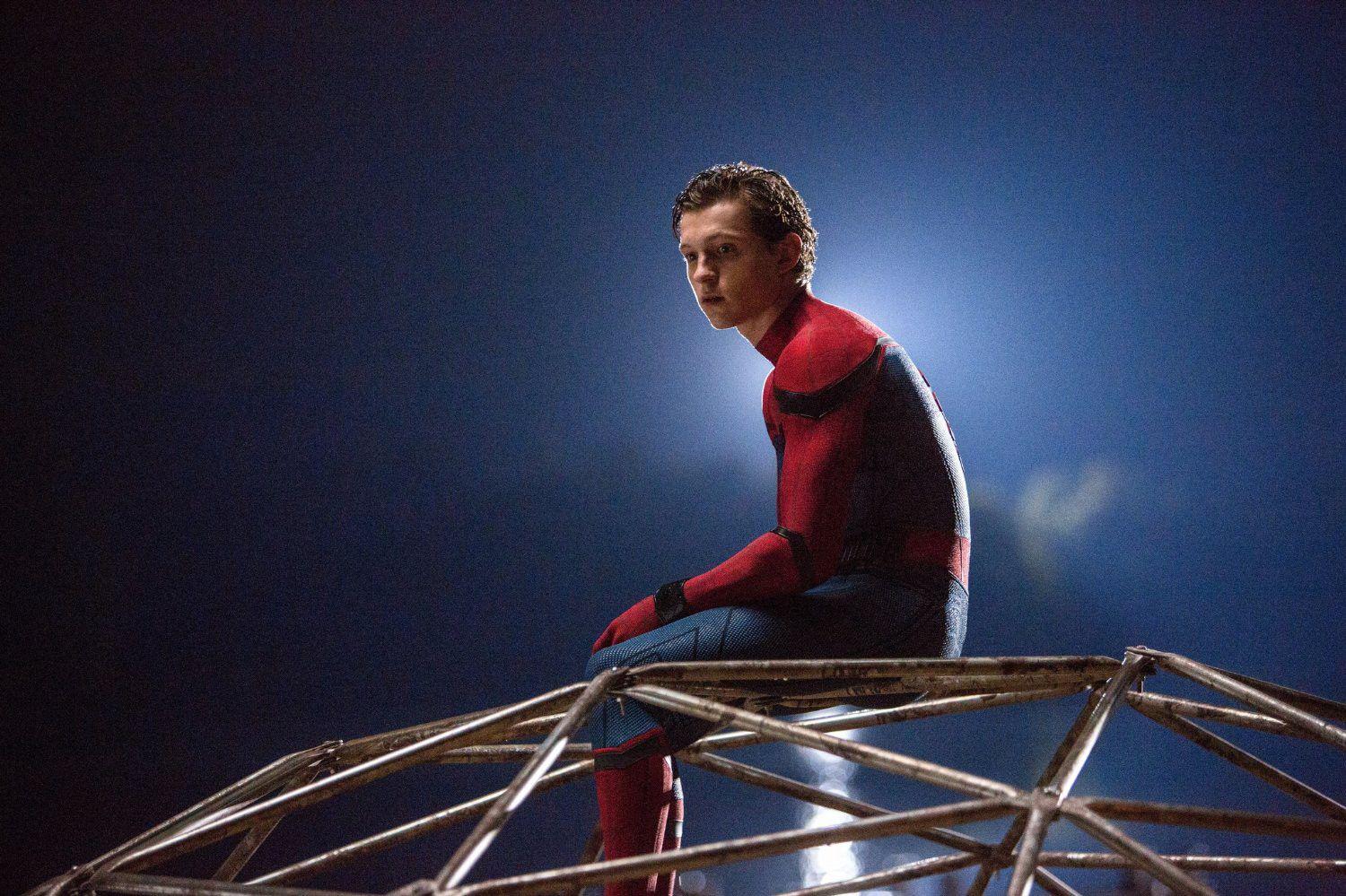
After that, Raimi and Maguire departed, with Marc Webb and Andrew Garfield launching a franchise reboot just five years later in 2012’s The Amazing Spider-Man. That and its sequel underperformed relative to expectations, with 2014’s The Amazing Spider-Man 2 doubling as the series’ creative and commercial nadir. Another Spider-Man franchise was in trouble, and shortly thereafter, the second series relaunch in five years was being developed.
With the immense cultural currency the character carries with him, one has to wonder why these films have struggled in recent years. There are a bevy of factors, not the least of which is one the films share with the comics: the number of series reboots.
"It’s the third Spider-Man universe in 15 years," Mendelson said. "The concept of a big-budget superhero movie is no longer special. The concept of a big-budget Spider-Man movie is no longer special."
While that’s likely a factor, perhaps nothing has taken more away from what makes the Spider-Man franchise a titan than the rise of the Marvel Cinematic Universe. The superhero film juggernaut has affected the entire movie industry, but the impact on Spider-Man is perhaps even greater. Had Marvel’s other heroes replaced Spider-Man at the top of the superhero food chain?
"In the comic book community, he’s still one of the heavy hitters, but in terms of pop culture and the audience of younger moviegoers, they could care less," Truitt said. "‘I don’t need a new Spider-Man because I have Iron Man and Thor and Captain America now.’"
It wasn’t just that there were heroes replacing Spider-Man on the marquee, it was that the movie versions of Marvel’s heroes so perfectly employed one of the elements that made Spider-Man unique: his sense of humor.
While many heroes are stoic and stern in battle, Spider-Man quips and jokes and banters even as he’s fighting. Bendis referred to it as his version of trash talk, but it’s a fan favorite feature of the character. It’s always been a differentiator for him in the comics. But in the MCU, everyone is like that, as the "world is so quippy even Doctor Strange is a comedian," Mendelson said. In this new world order, Spider-Man had lost one of the elements that always made him stand out amongst the rest.
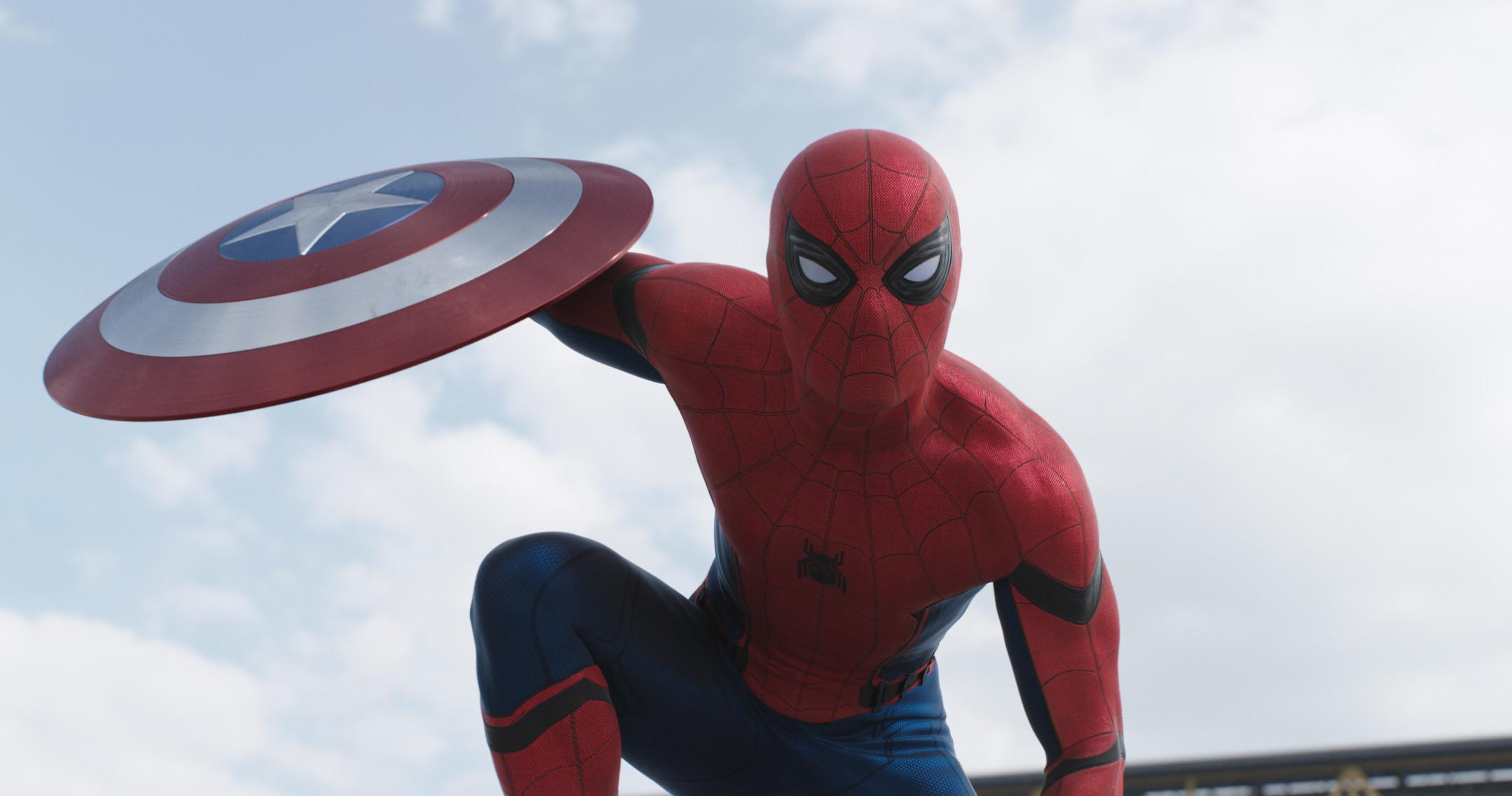
That’s why Sony’s deal with Marvel to bring the character into its Cinematic Universe was so important. While it’s unlikely that a third Amazing Spider-Man would have bombed at the box office — no Spider-Man film has made less than $708 million worldwide — restarting the franchise and inserting the character into the MCU was a smart move, as it reignited the excitement audiences had for Spider-Man and turned a potential obstacle into a strength. The character isn’t on the outside looking in anymore; he’s an Avenger, and that comes with perks for all involved.
Not only that, but the deal put the character into an unprecedented position. Typically, movie studios will hold onto properties for dear life, especially one as powerful as Spider-Man. But with the state the franchise was in, it opened up an opportunity for collaboration.
While the process of getting there was assuredly complicated, the deal itself was simple: Marvel leveraged its ability to churn out well-liked hits to earn the inclusion of its favorite son in its cinematic universe. Marvel Studios’ Kevin Feige said the agreement kept the rights and all non-creative decision-making on Sony’s side, while Marvel and its grand moviemaking machine was able to develop the Homecoming franchise creatively as it would any other property. It allowed Marvel to find the right fit for the character in the MCU, and one that repositions him as being his own unique blend of the company’s proven formula. It’s an atypical deal, but one that had the potential to be a winner for all involved.
So far, so good. Even before Homecoming, we’ve seen the impact the character’s inclusion in the MCU could have. Marvel knew how much fans were anticipating his arrival, as it released a trailer for Captain America: Civil War — Holland’s first film as Peter Parker/Spider-Man — that closed with a brief clip revealing the character. It quickly became a sensation known as "the Spider-Man trailer," generating almost 63 million views in its first four days.
The film itself was hardly different, as Holland’s debut as Spider-Man immediately made him a standout. Truitt, for one, has been inspired by what he’s seen so far from Holland, both in Civil War and beyond.
"In Civil War when you saw him next to Tony Stark and next to Steve Rogers, he looked like a flipping kid that shouldn’t be there," Truitt said. "That is what Spider-Man should be."
While both Tobey Maguire and Andrew Garfield gave capable performances as the character, it was impossible to deny that they seemed like adults playing teenagers. Holland is different — he looks the part in a way Maguire and Garfield simply couldn’t.
In Homecoming, there’s more push and pull between Peter’s high school life and his superhero one, emphasizing the youth and awkwardness that comes with Spider-Man’s territory. The early looks at the film have shown a character more reflective of the lively, modern voice Bendis brought to Peter in the Ultimate Spider-Man comics. Holland himself admitted Ultimate was an influence on his performance, and that impact extends beyond the main character: Jacob Batalon’s Ned Leeds — Peter’s close friend and confederate in the film — clearly takes after Miles Morales’s best friend, Ganke.
This is the first Spider-Man film — and MCU entry — that has the feel of a young adult film.
"We’ve never had a YA superhero movie from them," Truitt said. "Now with a YA Spider-Man movie, that is very much about a kid being around a lot of other kids having to deal with bigger than kid issues, it makes a lot of sense because that’s a role we haven’t seen those movies fill yet.
"That’s an audience they haven’t catered to."
The YA focus was by design, of course. Potential directors were pitched the film as "a movie as if John Hughes had directed it," and the plan is for a Harry Potter approach to Homecoming and its sequels, with each film focusing on one year of school, starting with Parker’s sophomore year.
It’s shown up in the marketing of the film as well, with Holland and the cast creating such a convincing web of Instagram videos and snaps of them hanging out that you can’t tell what’s publicity and what’s simply young people having fun in typical fashion. Case in point: Holland and Zendaya’s appearance on Lip Sync Battle, featuring the former’s now legendary performance of Rihanna’s "Umbrella."
Homecoming feels like a new, fresh take on the character, and that extends to a wise decision the film made in bypassing the origin story. People already know it. We’ve seen it twice, not including flashbacks in other films. Instead of killing Peter’s Uncle Ben for the third time on film, "You can just get into Spider-Man being Spider-Man and entertaining people," as Truitt told me.
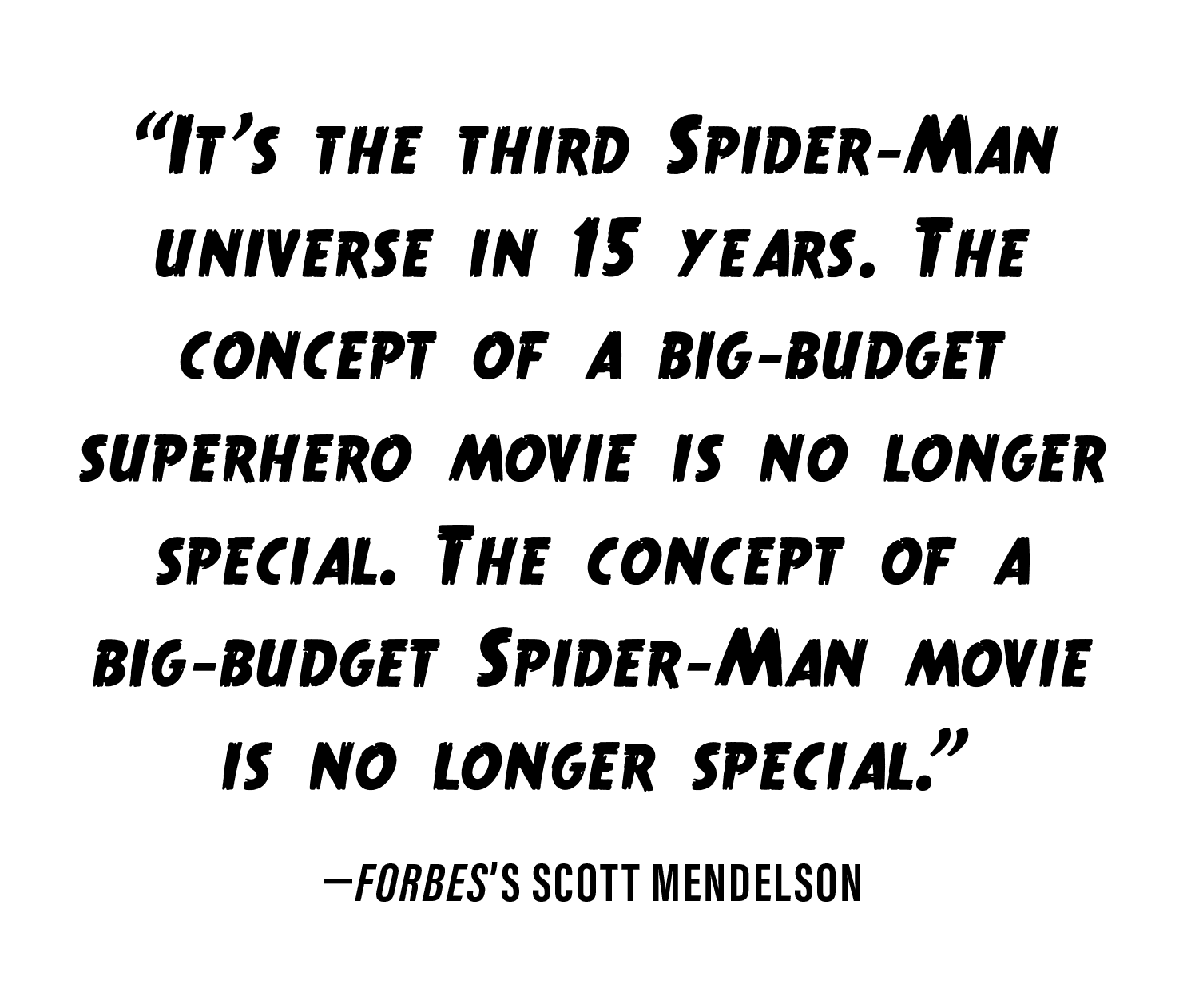
While it appears Sony and Marvel have carefully managed this new iteration, there is some risk. Again, this is yet another Spider-Man franchise launch, and it’s the third film in five years starring the character.
"It could have wonderful reviews and make $350 million domestic and $850 million worldwide," Mendelson said. "But if it doesn’t, it’s because it’s just another Spider-Man movie to most of the audience in the way Man of Steel was just another Superman movie."
It’s a specter looming over the property’s head, which is another reason Sony’s deal with Marvel to bring the character into the MCU was so huge. Mendelson describes Spider-Man’s inclusion in the MCU and Robert Downey Jr.’s Iron Man playing a part in Homecoming as "a weapon against franchise fatigue."
Will it need it? Gitesh Pandya, the editor of BoxOfficeGuru.com, doesn’t think so, even with the baggage the franchise carries.
"Since Homecoming is part of the Marvel Cinematic Universe and includes Iron Man in the story line, I see it resonating very well with fans," Pandya said. "How strong the film is will ultimately determine how high it will go, but not many will care how many actors have played the character if the film delivers the goods and provides exciting summer escapism.
"It certainly has the potential to beat out the last Spider-Man film."
Both Sony and Marvel are betting that it will, as Homecoming is only the beginning of the plans for Spider-Man. The character is set to appear in the next two Avengers films, a Homecoming sequel slated for July 5, 2019 (which is even meant to kick off the MCU’s fourth phase), as well as a recently revealed third film in the new trilogy. While there are reasons to question the viability of yet another Spider-Man film franchise, it’s clear the studios behind it are confident it will be a hit.

And let’s face it, there’s no reason it shouldn’t be. The character has an enormous fan base that reaches across age and ethnicity in a way few others can match. Google Trends backs it up, pinning the character as the second-most-searched superhero over the past five years — behind only DC’s Batman and Superman — surpassing more recent favorites like Deadpool and Iron Man in the process. Marvel and its corporate parent Disney have found the same answers in studies they’ve done across the globe, as Lowe shared they’ve found Spider-Man is still a giant, eclipsing "just about everything else."
It’s unlikely that Homecoming’s fate will alter the legacy of the character. While Spider-Man has both high points and low ones — in his fictional life and in his fortunes as a property — the timelessness of the character is impossible to deny. Even as other characters rise to the top, Spider-Man is always by their side, a constant in the perpetually changing ranks of fictional heroes. That’s fitting given the character’s boundless optimism and resilience.
While that nature makes him seem like a figure that’s more important than ever in a time filled with divisiveness — fittingly, Lowe noted, "[Spider-Man’s] whole identity as a hero has been marked by trolls," including fiction’s greatest example, Daily Bugle editor-in-chief J. Jonah Jameson — the characteristics and undying spirit that define the character also mark him as one who works regardless of the era.
It’s what makes him a lasting figure, no matter the situation. And for 55 years, Spider-Man has survived the zeitgeist. So, sure, Spider-Man might be down right now. But as he has proven time and time again, just when you think he’s finished, he’ll lift that impossible weight off his back.
"I think that no matter what is going on in the legacy of the character, Spider-Man remains the gold standard and gold star of not only Marvel Comics, but of superhero fiction and pop culture," Bendis said. "No matter the temperature of the world, there’s been a place for him."
This story was edited after publication to clarify Dan Slott’s writing tenure on Amazing Spider-Man.